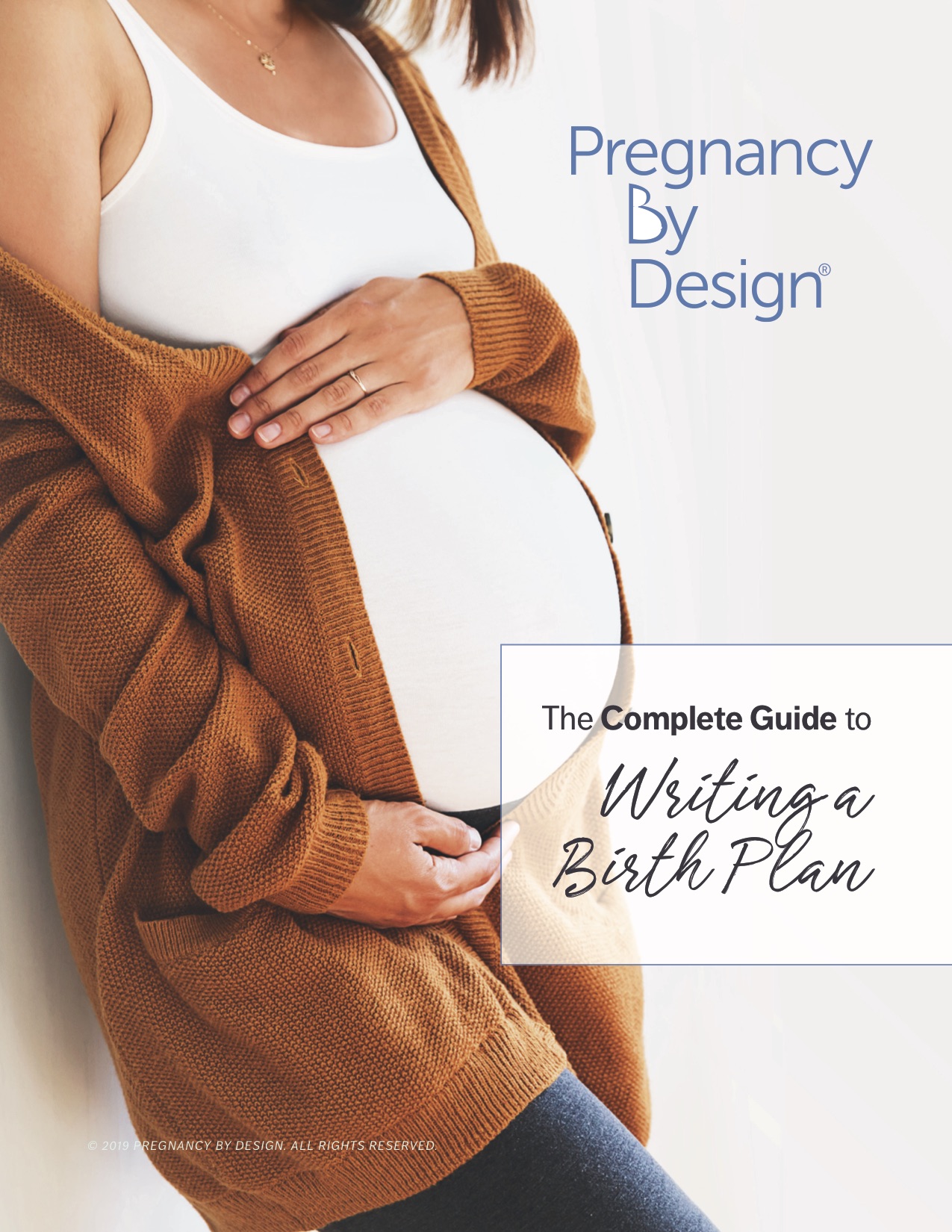There are 3 birth place options available in the US; hospital, birth center and home birth. It’s important to choose a place where you will feel comfortable laboring and giving birth. However, it’s even more important to understand the different models of care and care providers typically associated with each birth place.
Models of Care & Birth Places
There are 2 models of care; the Medical Model and the Midwifery Model of Care.
Medical Model of Care
The Medical Model of Care is the predominant model practiced within the hospital setting. In this model, the physician or provider is the decision maker and is primarily responsible. This model takes an approach that focuses on:
- Standardized care (similar approach to care for everyone)
- Relies more on technology than physiology
- Heavily focused on preventing, diagnosing, and treating complications that can occur during pregnancy, labor, and birth.
- Interventions are commonly used at a higher rate*
- Pregnancy viewed as a pathological state (needs to be managed)
* Note: this can potentially kicks off what is known as cascade of interventions
Midwifery Model of Care
The Midwifery Model of Care is predominantly practiced in birth centers and home birth but a Midwife will also practice within this model at the hospital. In this model, the mother is viewed as a partner in her care, sharing in the responsibility of her well-being. This model takes an approach that focuses on:
- Personalized care, focus on the individual woman’s optimal health and wellness
- Relies on physiology, only using intervention when needed
- Focus is primarily on preventive care with a strong emphasis on diet, exercise, natural care remedies and social support
- Believes in the integrity of normal birth, use technology when appropriate and proven
- Pregnancy and birth viewed as a normal/natural process
Learn more about the benefits of natural birth
Additional Differentiations between the Medical & Midwifery Models
In both models, the health and safety of the mother and baby are of foremost importance. However, this is not the midwifery models’ only goal. The Midwifery model views childbirth as something to be experienced positively, with the objective of making women feel stronger so she is well-equipped to take on the challenges of motherhood.
The Medical model is as it sounds medically-centered, while the Midwifery model is family-centered, and works to strengthen bonds between the mother and father, as well as the other siblings and the newborn. There is also a difference in labor support. In the Midwifery model, the Midwife arrives during the woman’s labor and stays with her until she delivers her baby. In the medical model, a woman will labor with the hospital nurses checking in on her and generally will not see the Obstetrician until she is about to deliver her baby.
Providers & Birth Places
When choosing a birth place where you will feel most comfortable giving birth, also consider that the provider you choose also determines which birth setting(s) you will be able to choose from. The two most common birth providers are Obstetricians and Midwives. These providers vary greatly in their philosophy of care.
Obstetrics Philosophy of Care & Values
- Trained to focus on the medical aspects of birth
- Care is led by the OB, woman is seen a patient rather than an active participant in her care
- Information about health, disease and degree of risk often not shared with the patient adequately
- Brief visits
- Minimal emotional support
- Values technology as a way to manage patients, often without proof that it improves birth outcome
- Protocol over the person, mother’s needs or desires often not considered
- Higher rates interventions & C-section*
Midwifery Philosophy of Care & Values
- See birth as a normal, and believe women’s bodies were designed to give birth
- Collaborative care – establishes the pregnant woman as an active partner in her own care
- Provide longer, more in-depth prenatal care visits fostering relationship and trust. Encourage family members, including children to attend prenatal visits
- Often provide strong emotional support
- Believe that birth is more than just having a healthy baby – focus is also on a healthy baby and a mother who is treated with respect and is given autonomy.
- Lower rates of intervention and C-section*
*A recent study comparing Midwifery and Obstetric Care in 23,000 low-risk hospital births found that midwifery patients had significantly lower intervention rates (artificial rupture of membranes, labor induction, episiotomy, and use of vacuum or forceps). The Midwife group also had an approximately 30% lower risk of cesarean delivery in first time moms and an approximately 40% lower risk of cesarean in moms who had previously given birth compared to the Obstetrician group.
Additional Differentiations between Obstetricians and Midwives
Obstetricians almost always deliver babies at the hospital whereas Midwives deliver babies at hospitals, in birth centers and at home. OB’s are trained in surgical birth whereas Midwives are trained in the normal process of childbirth. Midwives usually offer more birth choices than OB’s – including natural childbirth, Waterbirth and VBAC (vaginal birth after cesarean).
Learn more about choosing a provider
Birth Place Options
Hospital
The hospital is the most common place to give birth with 98% of births occurring there. Hospital maternity care is most often led by an Obstetrician guided by the medical model of care. Midwives (Both a Certified Nurse Midwife and Certified Midwife) also attend births at the hospital.
Pros and Cons of Hospital Birth
Some women will feel more comfortable in a hospital setting while other women may feel uneasy with or interrupted by the hospital’s protocols. However, there will likely be more restrictions during labor and birth in a hospital setting than there would be in a birthing center or home birth setting.
Pros of delivering at a hospital birth:
- Immediate access to surgical care, if a C-section is needed
- Access to anesthesiologists, who administer epidurals
- Access to neonatologists, specialists equipped to handle complex or high-risk newborn issues
- Nurses to assist with immediate postpartum support (and possible access to a lactation consultant)
- Food is provided by the hospital
- Provides help for the mother and baby for the first one to three days following birth
- Insurance typically covers hospital birth (check with your insurance provider and ask the hospital for an estimate of charges before your birth)
Cons of delivering at a hospital birth:
- Need to drive to the hospital while in labor
- May not be “allowed” to eat or drink during labor
- Continuous “drip” intravenous (IV) line is often required
- Almost all women (87%) will have continuous fetal monitoring
- You may not be able to walk or move around outside of the birthing room
- Delivery room may not have a shower or tub
- Hospital staff may not be supportive of a natural birth and/or other things in your birth plan
- A higher risk of medical interventions such as induction, vaginal exams, enema and/or episiotomy
- Significanly higher risk of cesarean delivery – national average is 31% vs. 5% at home birth and 6% at a birth center*
- Hospitals are large institutions and have policies that are difficult to adapt to the individual
- Less privacy. Most hospitals have frequent interruptions for hospital procedures and protocol
- Higher risk of complications and infection to the mother and baby in the hospital than at home or in a birth center
- Routine separation of the mother and baby is almost unavoidable– interrupting this critical first hour known as the “golden hour” of mom and baby bonding
* Many women don’t know that their highest risk of c-section is the hospital where they choose to give birth. Consumer Reports investigated over 1,300 U.S. hospitals and found that C-section rates for low-risk deliveries in the U.S. vary dramatically between hospitals.
A Hospital Birth is a Good Choice if You are:
- Considered a high risk pregnancy or have a medical condition such as insulin-dependent diabetes or high blood pressure
- Prefer to have an epidural to manage your labor pain
- Comfortable with the use of routine interventions to actively manage labor and the birthing process
Learn more about hospital birth and Baby friendly hospitals .
Birth Center
A birth center is a home-like setting where health care providers, most often Midwives, provide family-centered care to healthy pregnant women. The first freestanding birth center opened in 1975 in New York. As of 2021, the number of birth centers in the US has grown to over 400.
Birth centers practice within the midwifery model of care and facilitate a woman’s right to make informed choices about her and her baby’s health care based on her values and beliefs.
Freestanding birth centers are separate from hospitals. There are also a few hospital-based birth centers that are attached or located inside the hospital and affiliated with the hospital’s health system.
Birth centers are a good option for those who are uncomfortable with a homebirth, but desire a low-intervention birth in a more intimate environment.
Pros of Delivering at a Freestanding Birthing Center
- Look and feel very much like a comfortable home in a medical environment
- Parents are able to meet the entire staff prior to the birth
- The Cesarean section rate (6%) is less than a hospital (31%)
- Labor is able to progress normally, with minimal interference or interventions
- The birth team does not go home because of shift end and the woman can have family and friends present
- Continuous one-on-one care. Her Midwife knows her well and she knows her care provider
- Significantly lower rate of intervention than hospital birth
- Free to eat, drink, listen to music and move about freely
- Most have birth tubs and showers for water therapy, water labor and water births
- Length of stay is usually shorter than at a hospital (hours versus days)
- Mother and baby are kept together after birth while maternal and newborn care is provided encouraging skin-to-skin, mom and baby bonding, and breastfeeding success
- Ample breastfeeding help and support
- Usually less expensive than a hospital birth*
*The average cost of birth in a freestanding birth center is $7,240 (source) vs. an average of $12,156 for an uncomplicated vaginal birth (source).
Cons of Delivering at a Freestanding Birthing Center
- Some birth centers may not accept insurance – but out of pocket costs may be less than a hospital (check with your insurance provider)
- Freestanding birth centers have no immediate access to an operating room or neonatal care but birth centers are usually located close to a hospital
- No access to anesthesiologists, who administer pain medication such as epidurals but many offer labor tubs, nitrous oxides, and other pain relief comfort measures
A Birth Center is Good Choice if You:
- Are low risk, singleton pregnancy
- Believe birth to be a natural process that is safer and more satisfying without routine interventions
- Desire to be actively involved in the decisions involving your care during pregnancy and birth
- Feel more relaxed in a home-like setting than in a clinical environment
- Value having a vaginal birth
- Want the ability to eat and drink and move freely during labor
- Desire to use hydrotherapy during labor (birth tub, birth pool, shower), or give birth in the water and have a waterbirth
Learn more about birth center birth
Planned Homebirth
Up until the 1900’s, nearly all births occurred at home. By 1938, the rates of homebirth fell to 50% and to less than 1% by 1955. In recent years, homebirths increased by nearly 20% between 2019 and 2020, and 12% between 2020 and 2021. Some attribute the increase to women desiring more say over where and how they give birth, others to the poor maternal health outcomes accelerated by the covid pandemic.
Perhaps the biggest reason women do not consider homebirth as an option is that they are unsure of its safety. Some research has found that planned home births are associated with a higher risk of infant death than births planned at hospitals. However, other large studies on planned home birth have found that the rates of neonatal death are extremely low. A 2014 cohort study of nearly 17,000 women who planned midwife-led home births found no significant increase in neonatal death as compared with hospital births.
Learn more about the safety of homebirth & making an informed decision to birth at home
Pros of delivering at home:
- Privacy, comfort, and familiar surroundings of your own home, surrounded by loved ones
- No need to drive anywhere so labor usually progresses more easily as it is uninterrupted
- Increased comfort and freedoms
- Avoiding the germs and exposure of a hospital
- Lower risk of cesarean (5% vs. 31% in the hospital)
- Interventions are generally avoided
- Free to eat, drink, listen to music and move about freely
- Greatly increased privacy and intimacy, only your providers attend your birth – no hospital staff that you haven’t met
- More support and individualized care than in a hospital
- More control over your birth experience
- Increased options such as waterbirth, delayed cord cutting, immediate skin-to-skin
- Smoother breastfeeding initiation & increased likelihood of breastfeeding success (source)
- Lower risk of tearing (source)
- Babies born at home are exposed to a more diverse, healthy microbiome than in a sterile hospital setting
Cons of delivering at home:
- Women/Families assume a greater level of responsibility for their own health. This requires participation in decision-making, and a willingness to accept the consequences of those decisions
- Outside of popular culture – hospital birth is currently the socially acceptable birth place. Choosing home birth may result in lack of support and/or negative judgments.
- You may need to transfer to the hospital. On average 11% of homebirths require transfer (source)
- The cost of a home birth may not be covered by insurance
- Epidurals and nitrous oxide are not available at home
A Home Birth is a good choice if You:
- Are low risk, singleton pregnancy
- Would like to avoid risks/intervention and are willing to take greater responsibility for your health
- Had a previous birth that was traumatic and want to feel more heard and supported this time
- Are more of a private person – you will be more likely to get into a birth headspace in your own home without interruptions
- Desire more freedom and control over your labor and birth
- Would like to be a partner in your care
Still Unsure Where You Want to Give Birth?
The choice between giving birth at a hospital, a birth center or at home comes down to identifying which environment best fits with your values and offers the choices you are looking for. In making your decision, it is important to consider your personality and the type of setting you will be the most relaxed at during childbirth. The Birth Profile Assessment can you help learn more about yourself and determine which birth place and provider you would be most comfortable with.
Continue to do your homework and learn about the differences in birthing settings. The more you know about your options, the better decisions you can make – based on knowledge, not on fear.
Pregnancy by Design’s information is not a substitute for professional medical advice or treatment. Always ask your healthcare provider about any health concerns you may have.
Cited Research
Souter V, Nethery E, Kopas ML, Wurz H, Sitcov K, Caughey AB. Comparison of Midwifery and Obstetric Care in Low-Risk Hospital Births. Obstet Gynecol. 2019 Nov;134(5):1056-1065. doi: 10.1097/AOG.0000000000003521. PMID: 31599830.
Free Video Guide on Creating Your Birth Plan!
The Complete Guide to Writing Your Birth Plan is a step by step walk-through of the most important aspects of creating an effective birth plan. The guide covers everything you need to know from interviewing a provider, comfort measures and additional 1-page birth plan to talk over with your provider. Get free access today!















 Tips for Dealing With Morning Sickness
Tips for Dealing With Morning Sickness